A post-doctoral position is opened at the Interdisciplinary Research Institute of Grenoble (IRIG, formerly INAC) of the CEA Grenoble (France) on the theory and modeling of silicon-on-insulator quantum bits (qubits). The selected candidate is expected to start between October and December 2020, for up to two years.
Quantum information technologies on silicon have raised an increasing interest over the last few years [1]. Indeed, record coherence times have been achieved in 28Si samples [2]; also, silicon benefits from the exceptional know-how developed for conventional micro-electronics, and is the natural platform for the co-integration of quantum bits (qubits) with the classical circuitry needed to drive them.
Grenoble is pushing forward an original platform based on the “silicon-on-insulator” (SOI) technology. The information is stored in the spin of carrier(s) trapped in quantum dots, which are etched in a thin silicon film and are controlled by metal gates. On this SOI platform, CEA has for example demonstrated the first hole spin qubit [3], and the electrical manipulation of a single electron spin [4]. Grenoble is now heading toward the demonstration of multi-qubit gates on SOI, and has received in 2018 an ERC Synergy grant with the aim to develop two-dimensional arrays of SOI qubits. This large project is lead by a consortium gathering three of the main laboratories of Grenoble, CEA/IRIG, CEA/LETI, and CNRS/Néel.
As many questions about the physics of silicon qubits are still unsolved, it is essential to support the experimental activity with state-of-the-art modeling. For that purpose, CEA is actively developing the “TB_Sim” code. TB_Sim relies on atomistic tight-binding and multi-bands k.p descriptions of the electronic structure of materials and includes, in particular, a time-dependent configuration interaction solver for the dynamics of coupled qubits. Using TB_Sim, CEA has recently investigated various aspects of the physics of SOI qubits, in tight collaboration with the experimental groups in Grenoble and the partners of CEA in Europe [4-10].
The aim of this post-doctoral position is, therefore, to leverage on modeling and simulation to strengthen our understanding of silicon qubits and optimize their design.
Topics of interest include:
- Spin manipulation, readout, and coherence in silicon qubits.
- Exchange interactions in 1D and 2D arrays of silicon qubits and operation of multi-qubit gates.
This work will be strongly coupled to the experimental activity in Grenoble. The candidate will have access to experimental data on state-of-the-art devices, and will have the opportunity to interact with the partners of CEA in France and Europe.
How to apply: The candidate should send her/his CV to Yann-Michel Niquet (yniquet@cea.fr), with a list of publications, a motivation letter with a summary of past accomplishments, and arrange for two recommendation letters.
Required qualifications: The candidate must have a PhD in Quantum, Condensed Matter or Solid-State Physics (or related topics).
Additional informations about the laboratory:
http://www.cea.fr/drf/irig/english/Pages/Departments/DPhy.aspx
http://www.researchgate.net/profile/Yann-Michel_Niquet
http://scholar.google.fr/citations?user=h02ymwoAAAAJ
More about Grenoble and its surroundings:
Also see: http://www.mem-lab.fr/en/Pages/Jobs/2020_Postdoc_L_Sim.aspx
References:
[1] Embracing the quantum limit in silicon computing,
J. J. L. Morton, D. R. McCamey, M. A. Eriksson and S. A. Lyon,
Nature 479, 435 (2011).
[2] Electron spin coherence exceeding seconds in high-purity silicon,
A. M. Tyryshkin, S. Tojo, J. J. L. Morton, H. Riemann, N. V. Abrosimov, P. Becker, J.-J. Pohl, T. Schenkel, M. L. W. Thewalt, K. M. Itoh and S. A. Lyon,
Nature Materials 11, 143 (2012).
[3] A CMOS silicon spin qubit,
R. Maurand, X. Jehl, D. Kotekar-Patil, A. Corna, H. Bohuslavskyi, R. Laviéville, L. Hutin, S. Barraud, M. Vinet, M. Sanquer and S. de Franceschi,
Nature Communications 7, 13575 (2016).
[4] Electrically driven electron spin resonance mediated by spin-valley-orbit coupling in a silicon quantum dot,
A. Corna, L. Bourdet, R. Maurand, A. Crippa, D. Kotekar-Patil, H. Bohuslavskyi, R. Laviéville, L. Hutin, S. Barraud, X. Jehl, M. Vinet, S. de Franceschi, Y.-M. Niquet and M. Sanquer,
npj Quantum Information 4, 6 (2018).
[5] All-electrical manipulation of silicon spin qubits with tunable spin-valley mixing,
L. Bourdet and Y.-M. Niquet,
Physical Review B 97, 155433 (2018).
[6] Electrical spin driving by g-matrix modulation in spin-orbit qubits,
A. Crippa, R. Maurand, L. Bourdet, D. Kotekar-Patil, A. Amisse, X. Jehl, M. Sanquer, R. Laviéville, H. Bohuslavskyi, L. Hutin, S. Barraud, M. Vinet, Y.-M. Niquet and S. de Franceschi,
Physical Review Letters 120, 137702 (2018).
[7] Electrical manipulation of semiconductor spin qubits within the g-matrix formalism,
B. Venitucci, L. Bourdet, D. Pouzada and Y.-M. Niquet,
Physical Review B 98, 155319 (2018).
[8] Simple model for electrical hole spin manipulation in semiconductor quantum dots: Impact of dot material and orientation,
B. Venitucci and Y.-M. Niquet,
Physical Review B 99, 115317 (2019).
[9] A Spin Quintet in a Silicon Double Quantum Dot: Spin Blockade and Relaxation,
T. Lundberg, J. Li, H. Hutin, B. Bertrand, D. J. Ibberson, C.-M. Lee, D. J. Niegemann, M. Urdampilleta, N. Stelmashenko, T. Meunier, Jason W. A. Robinson, L. Ibberson, M. Vinet, Y.-M. Niquet and M. F. Gonzalez-Zalba,
arXiv: 1910.10118.
[10] Hole-phonon interactions in quantum dots: Effects of phonon confinement and encapsulation materials on spin-orbit qubits,
J. Li, B. Venitucci and Y.-M. Niquet,
arXiv:2003.07592.
